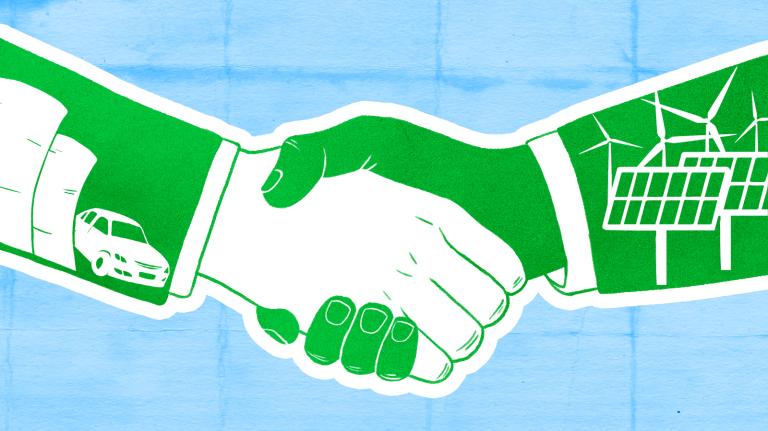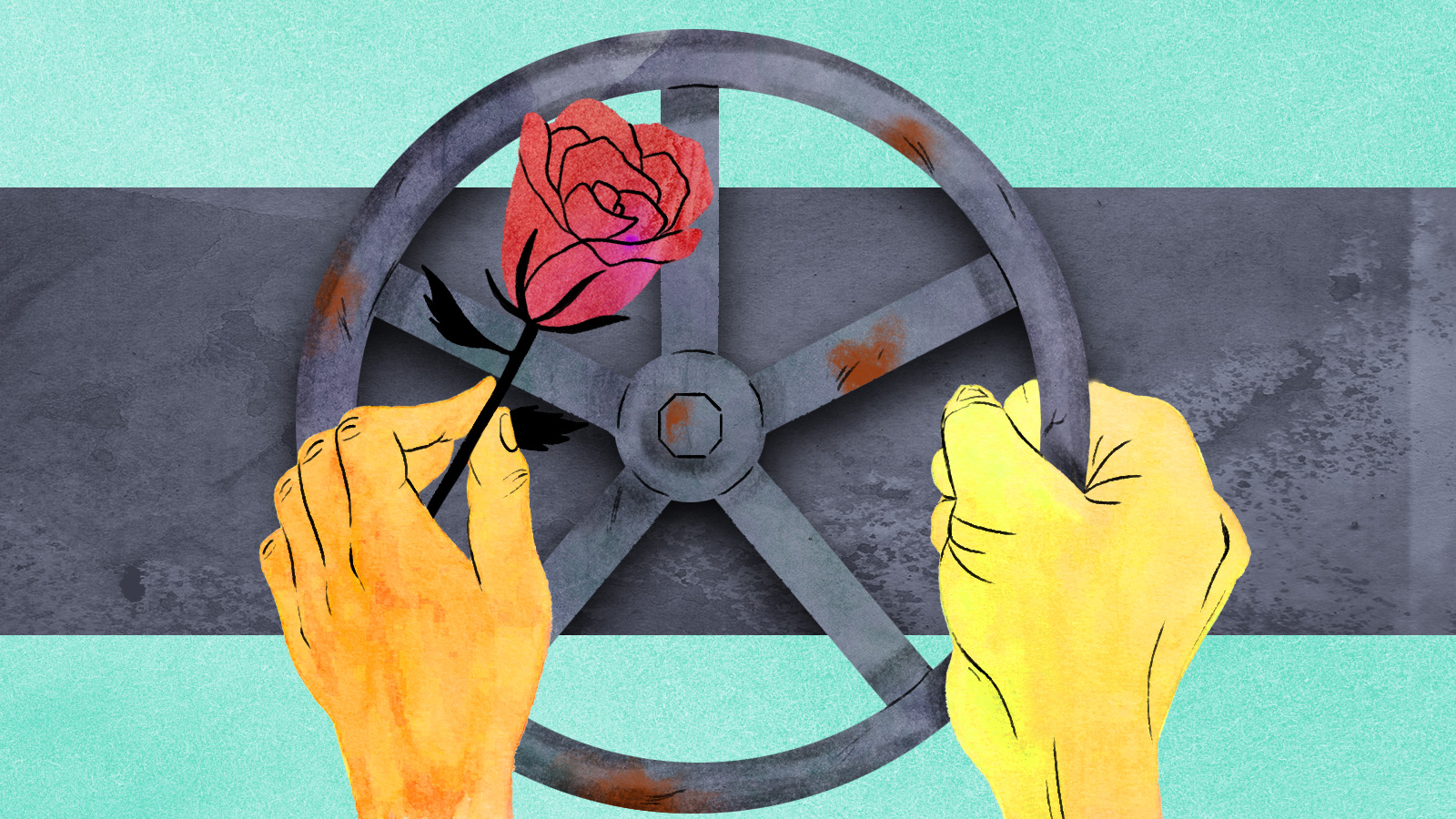My generation, the millennials, will never know a time when climate change wasn’t a grave threat.
Back in 1988, carbon dioxide in the atmosphere crossed the 350 parts per million level when I was still watching Sesame Street and digging up worms in the backyard. Scientists consider that mark the maximum threshold compatible with a stable climate and suitable for human life on Earth. That same year, NASA researcher James Hansen told the U.S. Senate he was 99 percent confident global warming was already taking place. The public started taking notice, but little was done to address the accelerating crisis.
Earlier this year, scientists in Hawaii and California confirmed that our planet’s level of atmospheric CO2 had surpassed 411 ppm. It’s at the highest concentration in human history — not just over the past 100 years or so of modern recordkeeping, or since the Industrial Revolution, or since the invention of agriculture around 9000 B.C. There’s more of the planet’s main greenhouse gas in the atmosphere since before our species evolved from our distant primate cousins millions of years ago.
The average global temperature is on course to rise 1.5 degrees C above pre-industrial levels in the coming decades, escalating the risks of irreversible and widespread sea-level rise and more frequent extreme weather — blistering heat waves, punishing hurricanes, and ravaging wildfires. So it’s no exaggeration to say that my generation is up against seemingly impossible odds.
For years, environmental activists have told us that we could make progress by tinkering with the status quo, that a big part of halting warming is buying the right car, clothes, and moisturizer; avoiding the dirty products; and reforming the way consumer goods are made. And still, the world’s emissions keep climbing.
Many climate scientists have called for radical action, writing international consensus statements and pegging paragraphs to the tail end of their articles in scientific journals intended less for their peers than to rouse the greater public. In fact, the overall tone of research has shifted toward themes that confront the inevitability of catastrophe on our current course juxtaposed with a still-possible world in which huge emissions reductions take place immediately.
For scientists, unhedged assertions like these are a protest. They’re not the only community that is up in arms. A new breed of environmental activist is risking jail time to stop an existential threat to us all. And young people are finding their voices and embracing new versions of old ideas to try to shake the world from its collective stupor.
A livable world achieved through incremental changes may have been possible in the 1980s, but it’s a fantasy now. Getting people to understand the scope of this staggering problem requires a balancing act. Too much doom, and you promote hopelessness. Too rosy, and you risk glossing over the urgency of the situation. The best approach elicits not hope but courage, says Kate Marvel, a climate scientist and fellow millennial.
“We are inevitably sending our children to live on an unfamiliar planet,” she wrote in a recent essay for the website of the On Being Project. “Courage is the resolve to do well without the assurance of a happy ending.”
In the final days of the 2016 presidential campaign, Emily Johnston traveled from her home in Seattle to northern Minnesota. There, she turned the emergency shut-off valve at the Canadian border on the Enbridge Energy tar-sands oil pipeline, one of North America’s largest. After she was arrested, she presented a novel legal defense: Johnston claimed that her turning the valve was a “necessity” in response to a climate emergency.
“I know that there are plenty of people in the world who think that what we did was crazy,” Johnston tells Grist. “When you risk jail time, there’s definitely a different way in how people respond to what you’ve done. It’s harder for people to dismiss what you’re doing.”
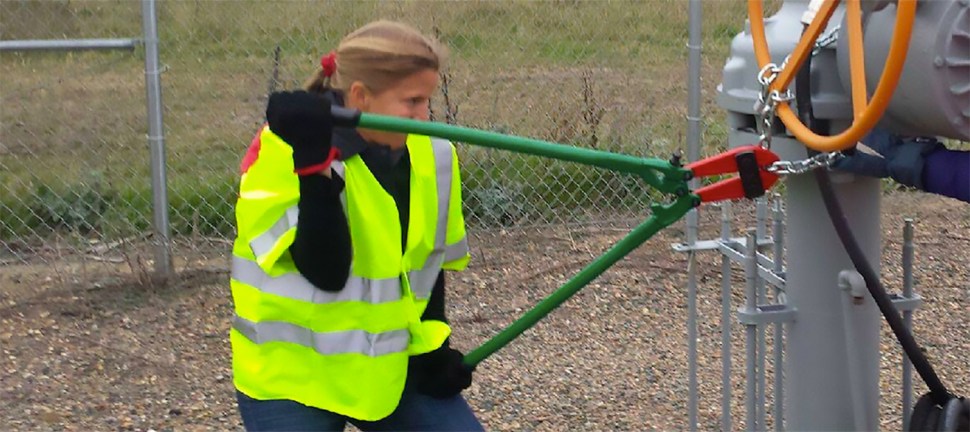
Steve Liptay / Climate Direct Action
When pressed, Johnston admits that she doesn’t like being labeled “a radical.” The way she sees it, her actions are like those of citizens who enlist in the military when their country is attacked. She sees it as putting her life on the line for a cause she believes in. Taking direct action like this might appear destructive on the surface. But it’s in the service of preventing a much larger threat.
“We have arrived at that place after thinking about all the other different things we could do and coming to the conclusion that this is, flat-out, simply something that has to happen given the urgency of the climate crisis,” she explains.
That same sense of pent-up urgency, that overwhelming need to act right now, is what led to the birth of modern, radical environmentalism nearly 40 years ago.
In 1980, a group of friends at the end of a backpacking trip across the Rockies formed a radical eco-movement known as Earth First! In their first statement of principals, they laid out a straightforward goal: “We do not wish to merely preserve what’s left, we want to re-create wilderness.”
The group caught the public’s attention because it wrecked things. Earth First! burned billboards advertising new subdivisions, occupied forests marked for destruction, and sabotaged ski lifts in posh mountain towns. Their peer and mentor Edward Abbey, the author and essayist, called these actions “monkeywrenching.” It was all done in the name of restoring nature.
Earth First! began tree sitting to protest the cutting of old-growth forests in the Pacific Northwest. In 1995, members forced the temporary closure of a golf course and ski resort in Colorado. The FBI labeled them terrorists in 2001, and their support waned.
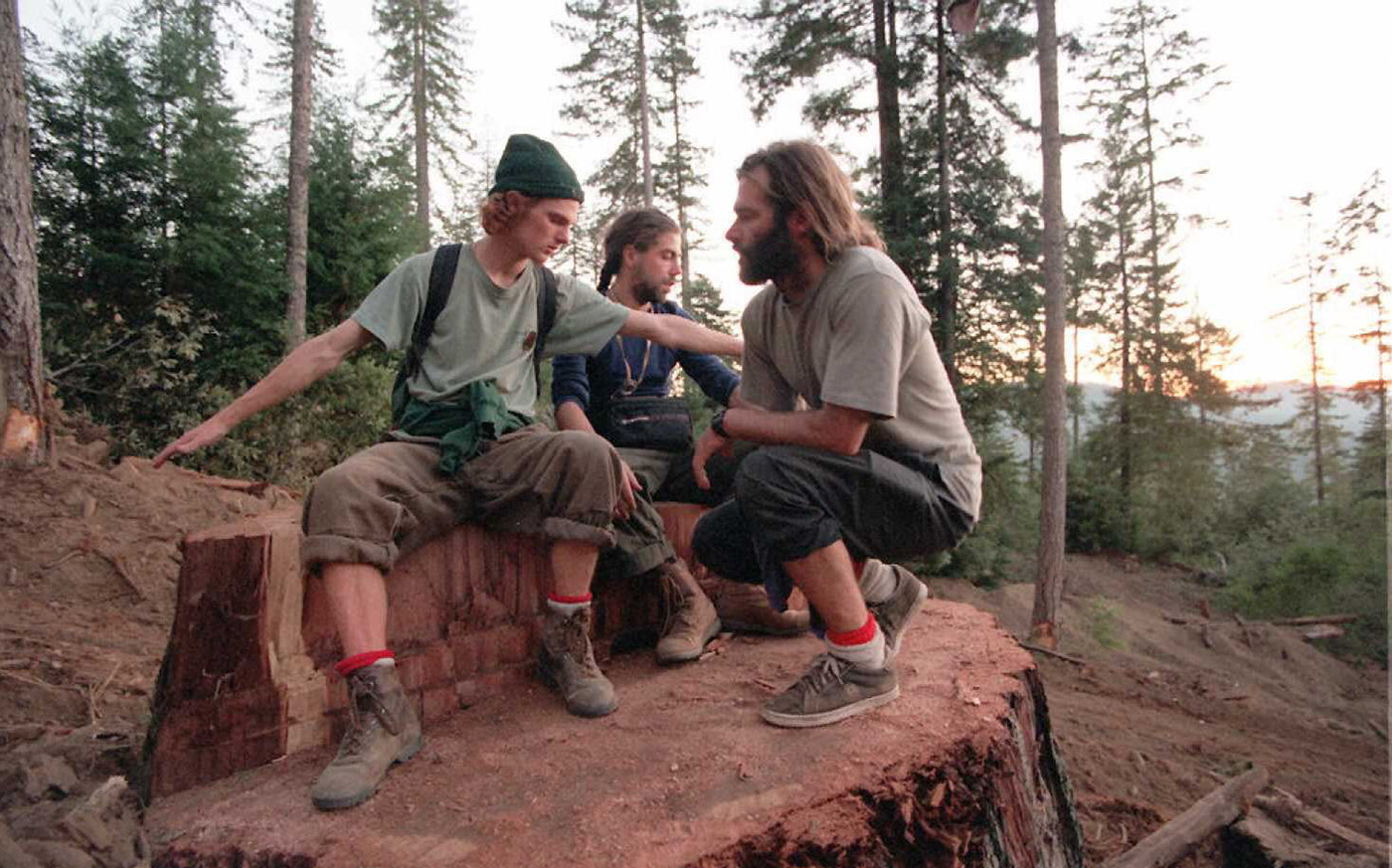
Earth First activists sit around the stump of an ancient tree cut down by a logging company. JOHN MABANGLO / AFP / Getty Images
Diana Liverman, a professor at the University of Arizona whose work focuses on the human impacts of climate change (and my former advisor), had a friend who, in the 1980s, inspired by Earth First!, committed acts of vandalism around Tucson to protest real estate development. She remains sympathetic for those staking out an extreme position.
“I am glad that the radical environmental activists are around as they can create change,” she says. By making the rest of us look moderate, Liverman says that they create space for compromise. “I occasionally consider more radical action myself, but I’m not sure what I would do.”
Johnston considers this “paralysis” in the face of such an enormous crisis one of the main barriers to widespread action. The way to break people out of it is by shifting the narrative.
“People feel really hopeless,” Johnston says. “One of the most important things we can possibly do is to offer an alternative narrative about what’s possible.”
Fed up activists around the world have continued the legacy of direct action, with pipeline protests and blockades. Activists in India delayed the clear-cutting of several forests that were to be turned into housing developments. And America’s tree-sitting movement lives on.
But there’s a budding realization that even these bold protests aren’t nearly up to the task. In the nine years that activists have spent opposing the Keystone XL pipeline, for instance, the oil industry invented an entirely new oil-by-rail transport industry. Meanwhile, the mainstream environmental movement continues to focus on “green” consumerism and incremental change. Got an SUV? Trade it in for an electric car. Don’t use that plastic straw, use this compostable one instead.
At best, those actions delay the widespread transformation we need by lulling us into a false sense of security. At worst, they continue a cycle of high-emission consumption. Feel bad about your cross-country flight to California? Pay to plant some trees.
Incremental change is not going to help on a planet that’s accelerating toward a carbon-fueled nightmare within our lifetimes. It’s not about “saving the planet,” as it was in the days of Earth First! It’s about saving all of us.
In recent years, young people have realized that it’s their future — and that of the generations after them — at stake. And they’ve adopted the climate cause in increasingly audacious ways, from suing the federal government to planning mass nationwide rallies. Observers are anticipating shifts in public opinion to translate into escalating action as millennials and the oldest members of Generation Z begin to exercise their growing power.
They’ve already featured prominently in international climate campaigns. Ahead of the Paris climate conference in 2015, a coalition of small island nations and other countries most at risk from climate change pushed hard to get other countries to sign up for an ambitious goal: Limiting global warming to less than 1.5 degrees C above preindustrial levels.
One of the most memorable voices from that campaign was Kathy Jetnil-Kijiner, a poet from the Marshall Islands. Jetnil-Kijiner’s stirring poem, written to her infant daughter and read at the opening of the United Nations Climate Summit in 2014, laid out the threat of climate change and promised to protect her child from the rising waters.
Seemingly through the force of persuasion, her pledge and thousands of others like hers worked.
As millennials take a larger role in the discussion around climate change, some are pushing for a new political movement that prioritizes collective action. For Sydney Ghazarian, a millennial activist in Los Angeles, that means socialism.
Ghazarian is a founding member of the Democratic Socialists of America’s Climate and Environmental Justice Working Group, with dozens of local branches around the country. She considers climate change to be part of a web of problems. “It’s not just that the oceans are acidifying,” she explains. “It’s also a crisis of racism. It’s a crisis of labor.” To her, all these result from a free market system that’s operating with few political constraints.
In the wake of the competitive presidential campaign of Senator Bernie Sanders, a self-identified democratic socialist who caucuses with Democrats, Ghazarian is trying to do the legwork of turning enthusiasm for Sanders and his issues into real change. By looking at climate change as a symptom of a larger problem, rather than just an environmental issue, Ghazarian hopes to help inspire an overhaul of economics and politics — or as she calls it, “a new system for organizing nature.”
“It’s about appealing to people where they are,” she says. “It’s kind of hard to make time for climate change when you’re worrying about how you’re going to get your next meal. Our only hope is to reimagine a future that puts people and planet ahead of profit.”
Democratic socialists like Ghazarian believe that there’s a natural connection between distributed energy generation from wind and solar power and decentralized political power. She envisions a future of community-owned electrical generation, more walkable neighborhoods, and governments that prioritize public health.
Ghazarian applauds efforts to block pipelines and tree-sitting protests but thinks there are simply too many pipelines to fight and too many forests to protect. Her focus is on rallying people to start building a better world so that there will no longer be a need for so many targeted, isolated protests.
“That is part of a positive vision of the future, one that values the collective voice of the communities that also see their interdependence with the environment,” she says. “Pipeline resistance holds space for our future, a future for energy democracy, public banks, localized agriculture, public and democratic ownership of water and resources, and whatever else is part of our cooperative reimagining of society.”
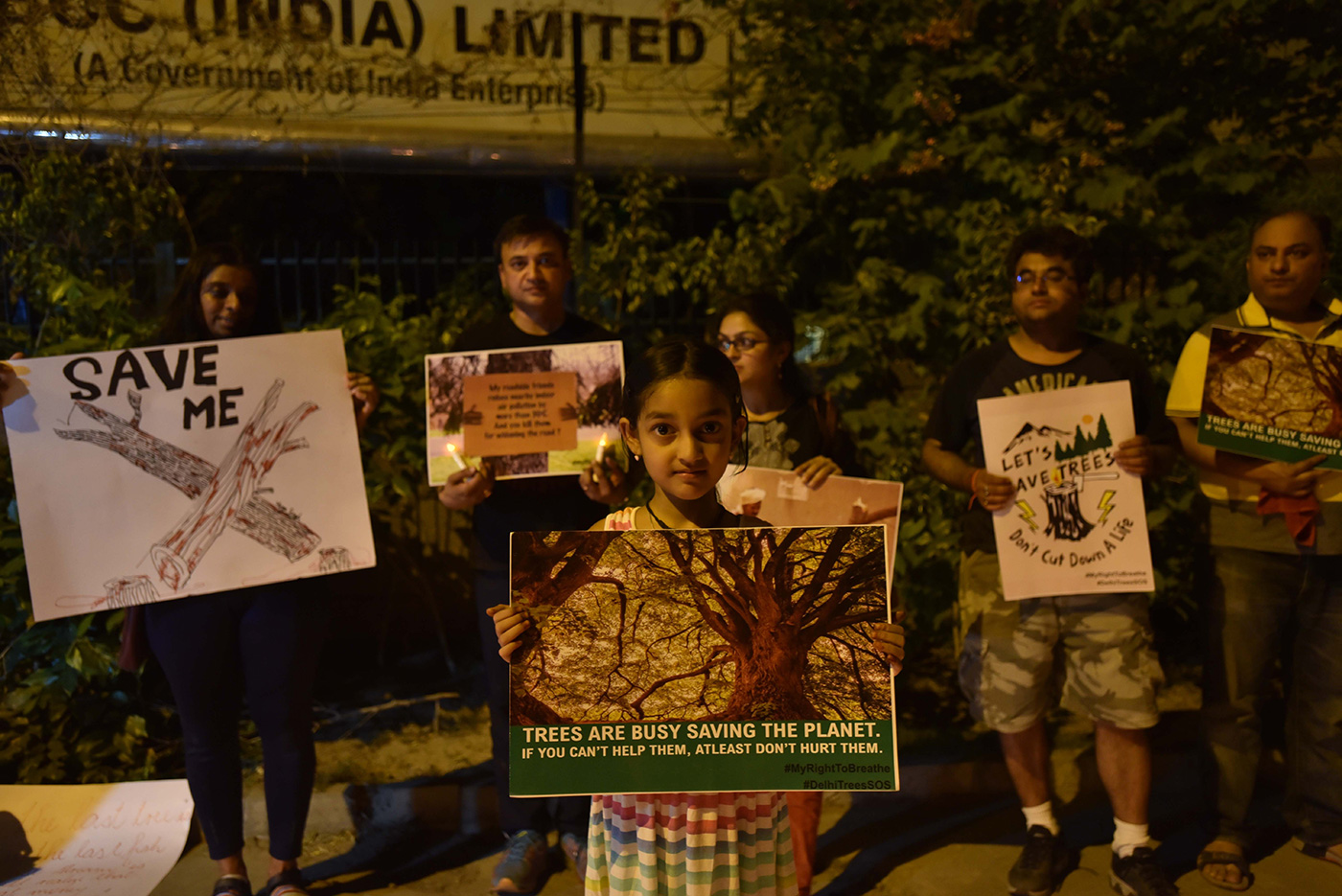
Anushree Fadnavis / Hindustan Times via Getty Images
Imagining such a future is the easy part. Bringing it to reality? Well, that may never happen. But people like Ghazarian see the benefit in at least trying — and taking steps toward their ideals.
For me, that ideal is a world where we’ve averted the worst climate change can offer — and a fair amount of the stuff ahead of that, too. The process of thinking of the future as a direct result of present actions has been oddly liberating. When focused on the next 80 years, it’s easy to make what might seem like tough decisions to others living in my privileged, Midwestern bubble — eschewing air travel, commuting by bicycle, raising my kids to be mostly vegan, teaching them to consider the consequences of their actions.
The science on climate change is brutal and unforgiving. Returning the Earth’s atmosphere to 350 ppm of carbon dioxide, perhaps feasible with current technology, isn’t the right goal. The aim of climate activism isn’t to erase the sins of the previous generations; it’s to ensure that future generations are handed a world that isn’t at the threshold of going to hell. That won’t happen in my lifetime without a truly radical remaking of the global economy. And if it doesn’t happen in my lifetime, then it’s very likely future generations won’t get another chance.
